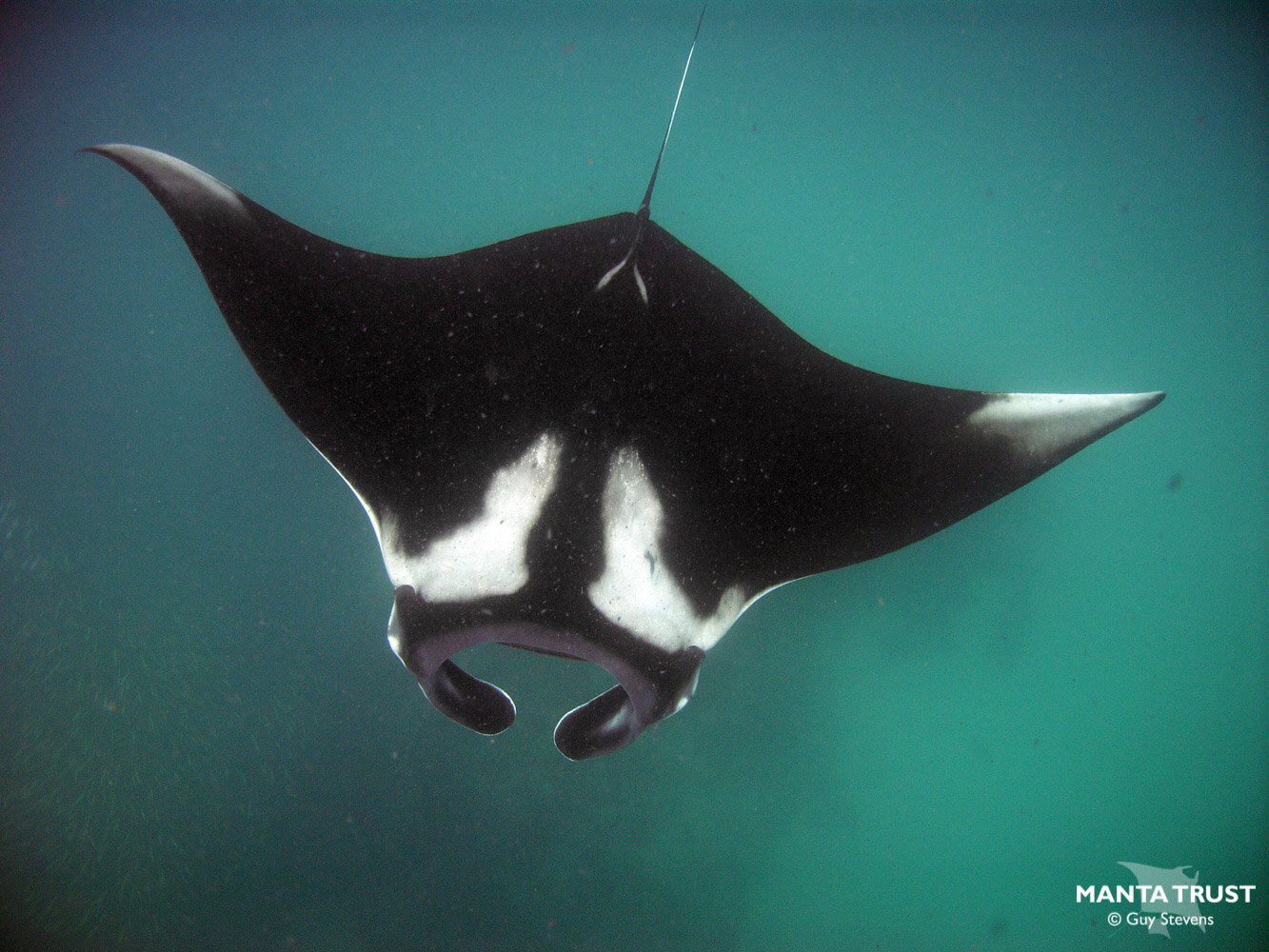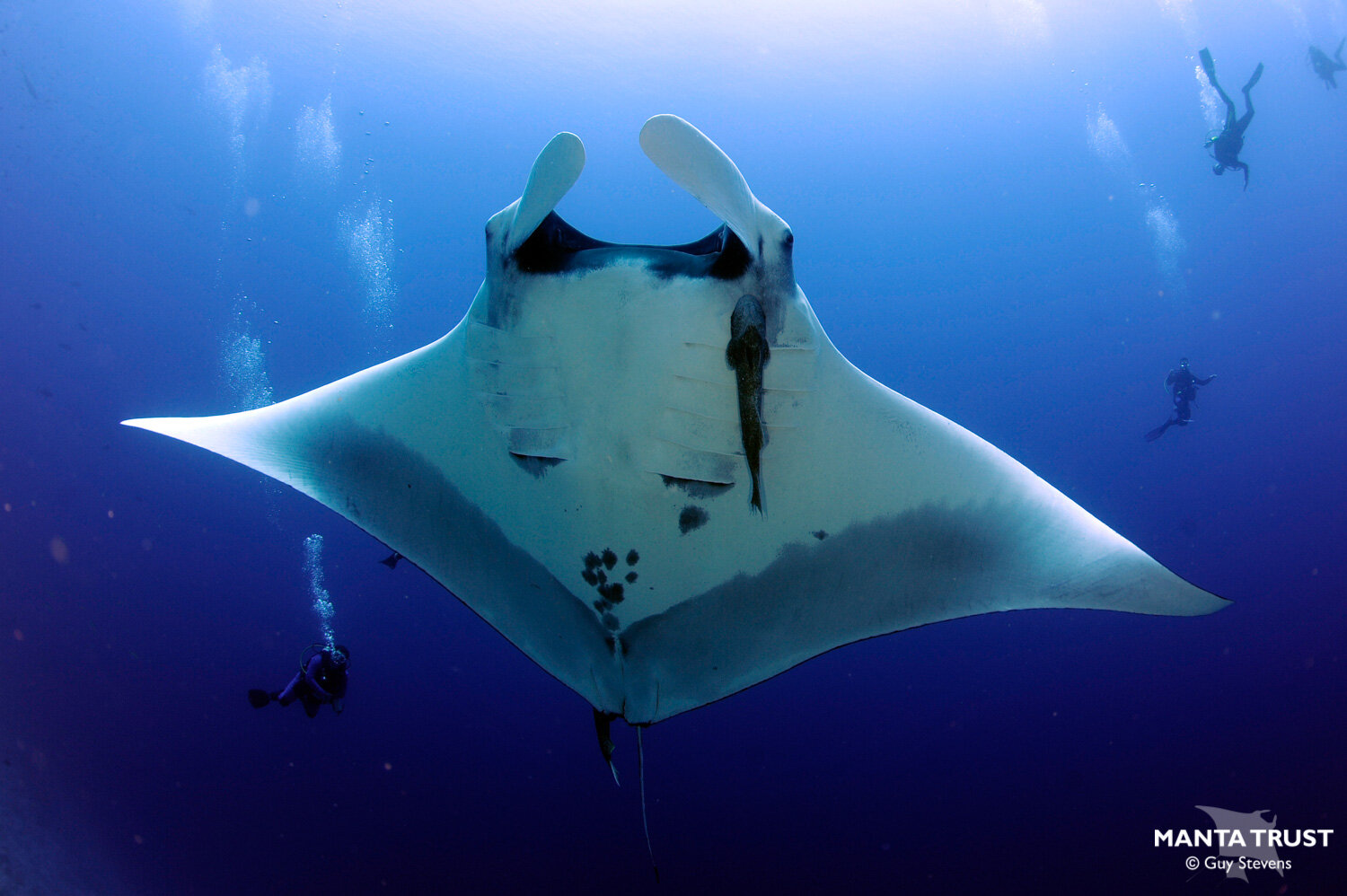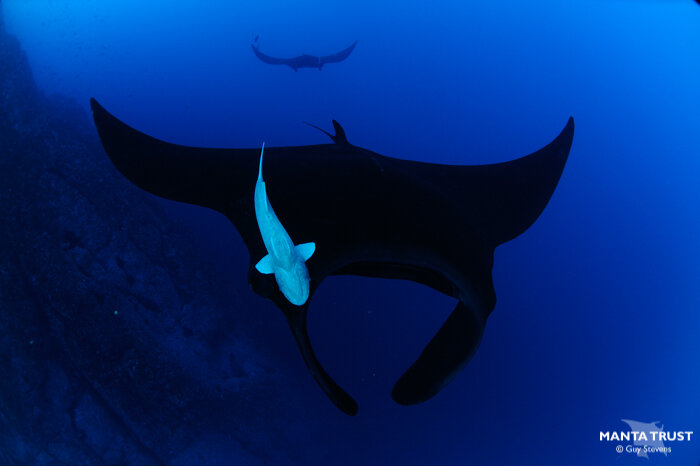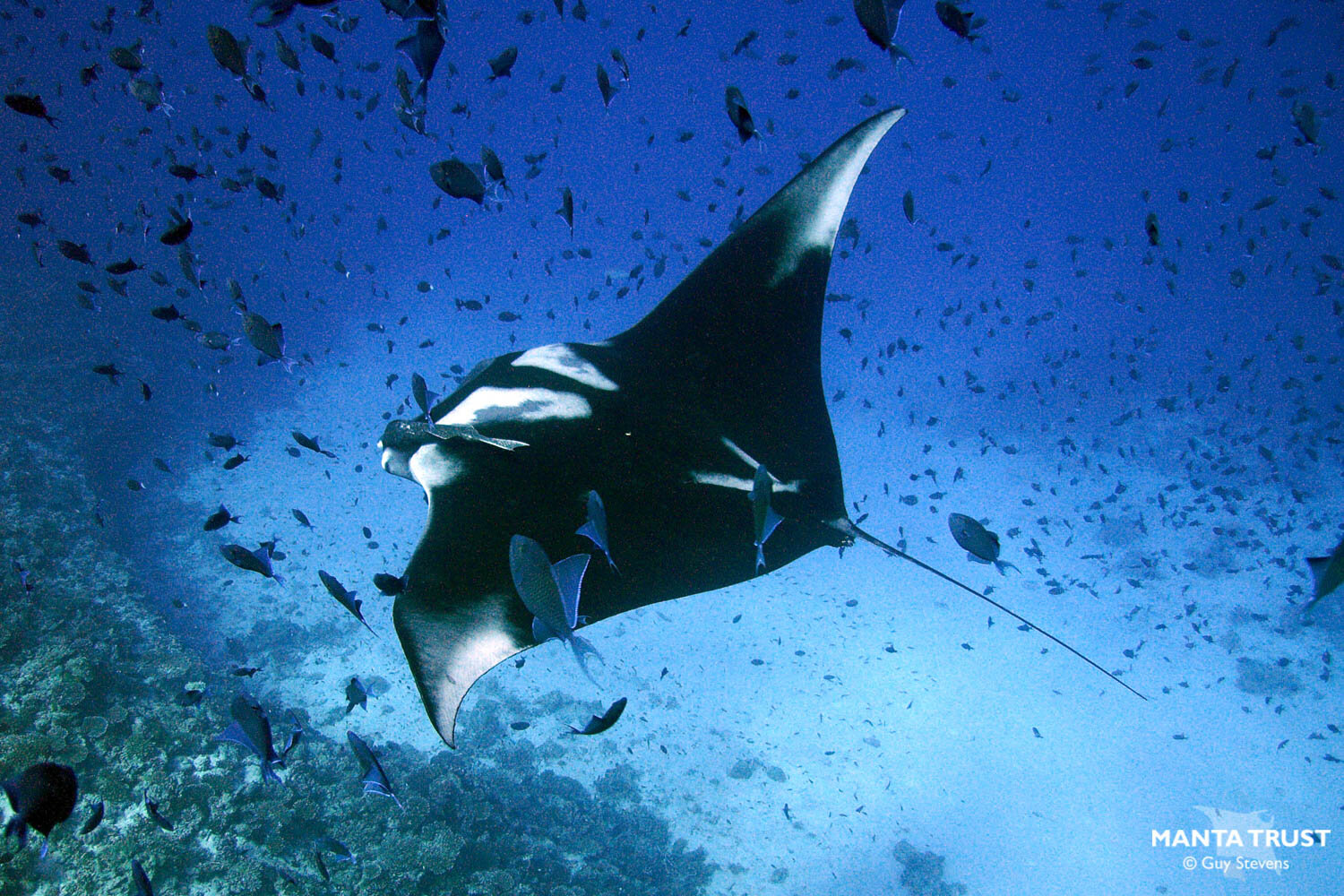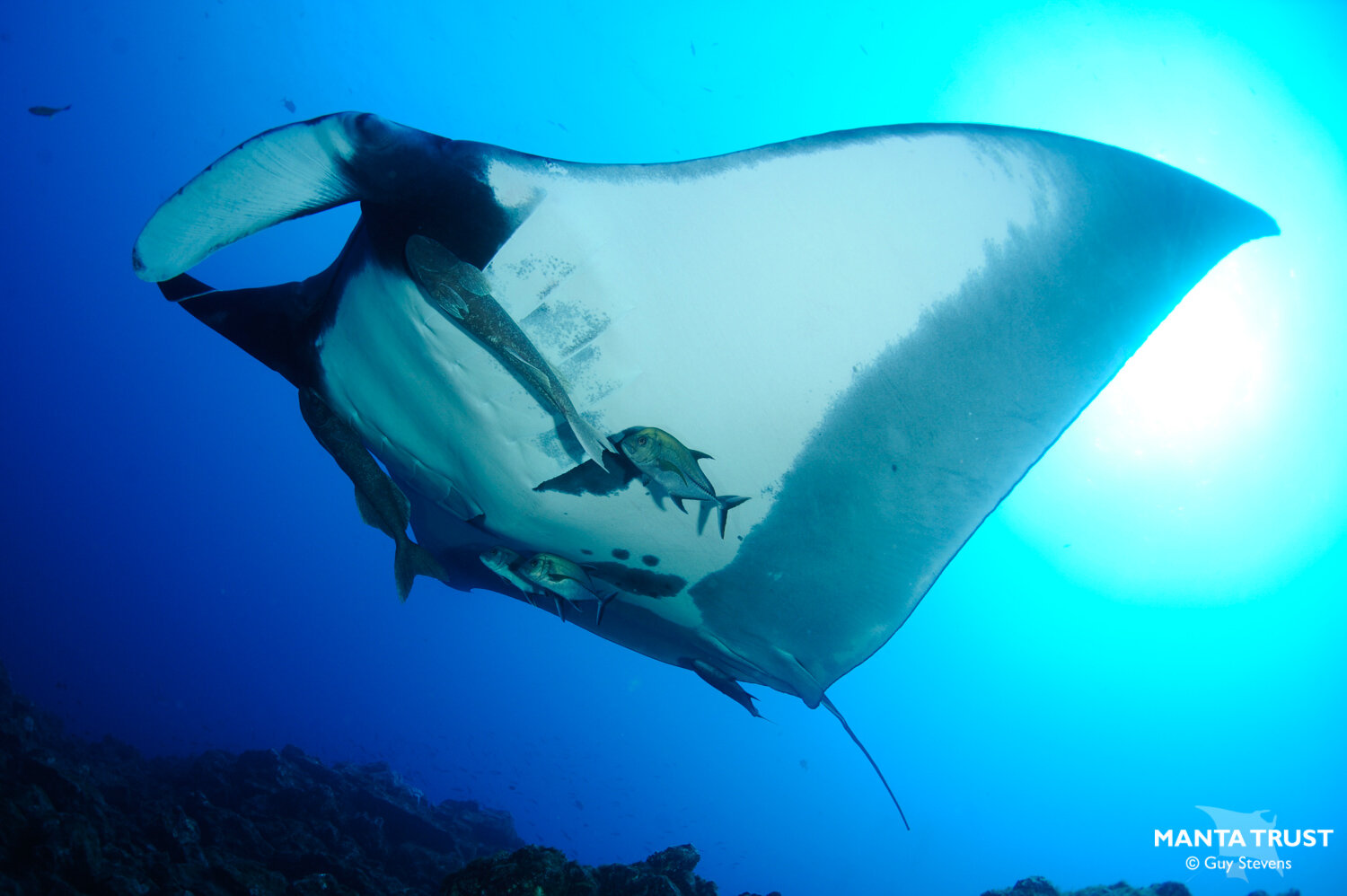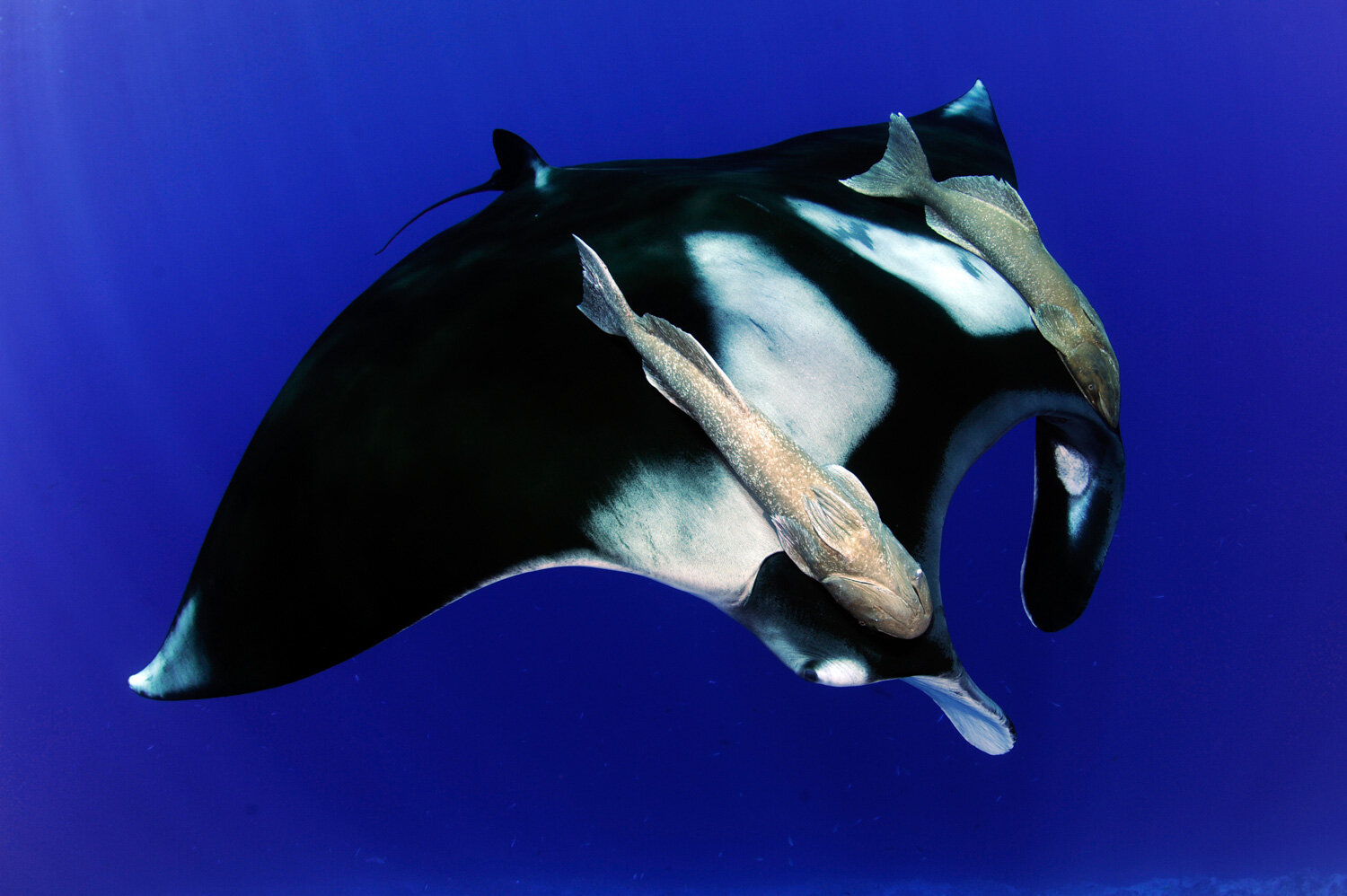
OVERVIEW
IUCN Red List classification.
The oceanic manta ray (Mobula birostris) is the largest ray species in the world with a disc width of up to 680cm in extremely large specimens. Oceanic manta rays appear to spend much of their time in the open ocean away from reefs, diving hundreds of metres into the deep scattering layer to find their zooplankton prey. They also spend a lot less time visiting cleaning stations than reef manta rays.
Oceanic manta rays are widely distributed throughout the tropical and subtropical regions overlapping with reef mantas across of lot of this range. However, they are also threatened by targeted fisheries driven by the demand for their gill plates. Climate change is also likely to affect the abundance of the zooplankton prey upon which this species relies.
DISC WIDTH
Average: 400-500cm
Max: 680cm
WEIGHT
Up to 2,000kg
LIFESPAN
Likely to be around 40 years
KEY FEATURES
Dorsal white shoulder markings form two mirror image right-angled triangles, creating a ‘T’ in black.
If present, ventral spots clustered around lower abdominal region.
Inside of mouth and cephalic fins, and trailing underside edge of pectoral fins usually shaded black (excluding leucistic morph).
Knob-like bulge housing vestigial spine at base of tail.
Large gill plates with fused lateral lobes and rounded terminal lobe. Plates are coloured uniformly black, although occasionally completely white.

GALLERY

LATEST RESEArCH
To see publications on manta and devil rays from the Manta Trust and our affiliate projects please click here:
WANT TO LEARN ABOUT OTHER MOBULID SPECIES?











